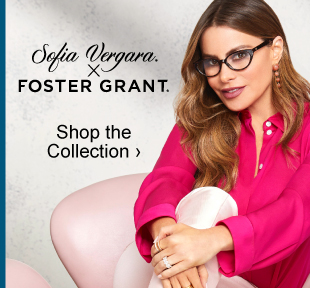Eyewear has majorly advanced since the 13th century, but blurry vision is not a new phenomenon. Since eye glasses did not come on the scene until late in the 13th century, people had to come up with creative solutions. Between 1000 and 1250 AD, reading stones were discovered — spherical magnifying glasses you could lay over your manuscript to enlarge letters as you read. In ancient Rome, the emperor Nero would hold a polished emerald in front of his eyes to reduce the sun’s glare while he watched gladiators fight. Roman philosopher Seneca was known to use water-filled objects as a means to magnify text for studying and reading as early as 4 B.C.
Fast-forward to 1286 when Italian monks developed the first visual aid. The glasses were made of two framed glass or crystal stones, and were held up to the eyes using a handle. By the end of the 14th century, thousands of eyeglasses were being exported to all of Europe. Florence, Italy became a leader in production, sale and innovation of eyeglasses in the mid-1400s. After the realization that vision slowly declines with age, glass makers in the area began to create eyeglasses in various strengths. Eyeglasses were graded with strengths progressing for every five years of age.
In 1665 The London Press delivered the first newspaper, sparking a demand for eyeglasses. It was around this time that people who wore glasses were viewed as intelligent and of high status. Eyewear began to evolve once again when France introduced the “pince-nez” (translation: “to pinch the nose.) These spectacles are known for their uncomfortable design as they were made of wire or horn, sometimes leather, and sat at the bridge of the nose without temples. It was Teddy Roosevelt who is tributed for making the pince-nez a popular style in the United States.
The round lens look continued to be the style choice through the 1920s and 1930s but were made from sturdier metal and celluloid. To enhance the look of these metal glasses new materials were introduced: real silver, 12k-gold plating, and tortoise shell. Tortoise shell became a very popular material due to its detailed markings, but was also considered uncomfortable since it was a heavier material.
As men and women began to desire more variety in their eyewear, trends in lenses shifted to the browline and cat eye styles in the 1940s and 1950s. These new styles combined both metal and plastic. It was common to see plastic at the top of the lens. This look became so popular that after World War II it was noted that the browline and cat eye styles made up 50 percent of eyewear sales. This decade was also the beginning of bold colors and decorations being incorporated into glasses.
John Lennon, Janis Joplin, Jackie Kennedy, and Elton John were a few of the people who influenced the looks in eyewear during the 1960s and 1970s. During this decade oversized, bug-eyed glasses were all the rage. The oversized white plastic frames became the signature look throughout the 1960s, as well as round colorful lenses, influenced by the hippie styles.
The 1980s saw a comeback in vintage clothes and accessories which also translated into trends in eyewear. Popular styles during this decade consisted of rhinestone bedazzled cat-eye glasses, Rockabilly metal frames form the ‘50s, and unique mod shaped frames from the ‘60s. Transitioning from the ‘80s to the ‘90s, styles in eyewear took a 180 degree turn by moving towards simple black shades and sporty shapes with a minimal/serious look.
Glasses in the 21st century reflect many of the styles seen throughout previous decades. Eyewear in the 2000s do not lean towards one signature look, but instead caters to personal style. As fashion magazines are no longer the major influencer in fashion that they once were, street style has become a key influencer in trends today. Social media, bloggers, and photographers are a few of the top influencers driving trends in the 21st century. Name brand designers are putting more money towards their eyewear lines resulting in glasses making regular appearances on the red carpet. Glasses now have their own space in the fashion world as they have become a desirable accessory.





0 Comments